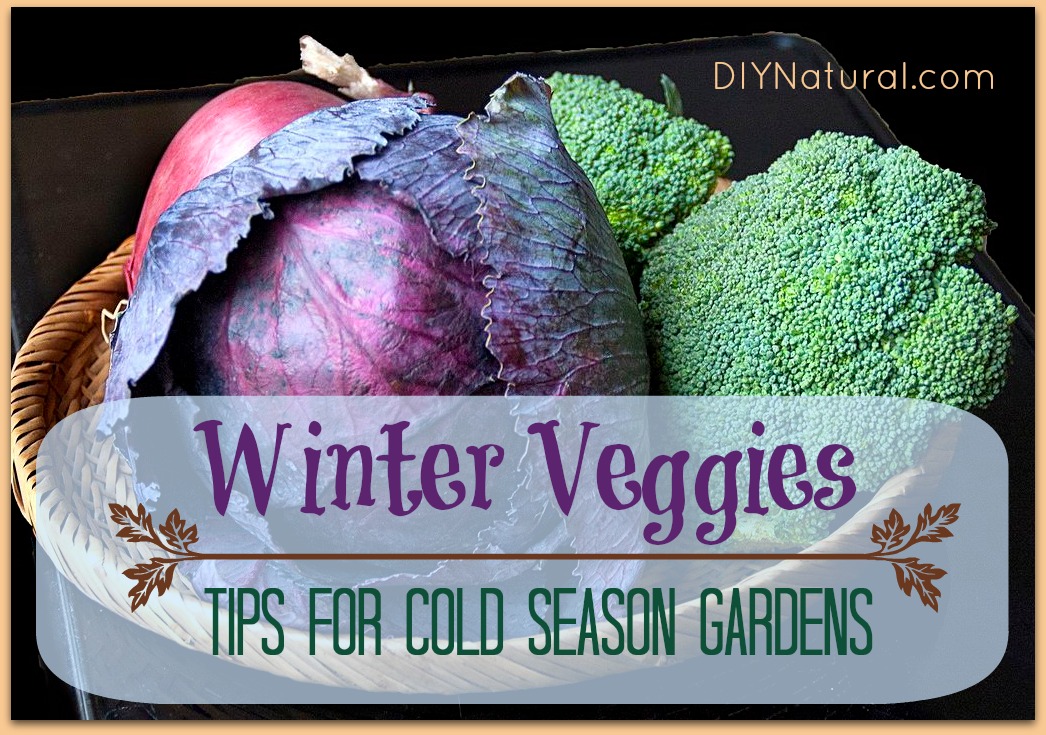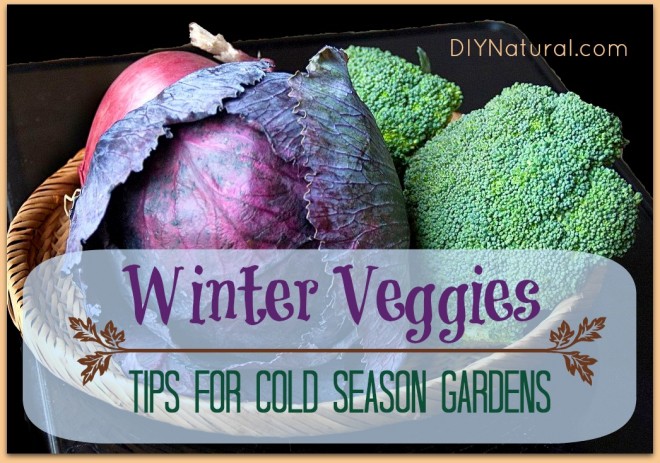As fall begins, cooler nights turn cold and warm days are abundant. Your garden is done and ready to be put to bed for the winter. But wait! You can keep growing veggies all fall and into winter. How? I’ll tell you my secrets!
Growing Veggies into Winter
1. I use a 3×3 bed.
I take a 12ft board, usually 10 inches wide, and cut it into 3ft sections. I use an L-shaped piece of hardware to stabilize the corners. When the bed is complete, I lay it on the ground. I use a sheet of cardboard underneath to keep the weeds out. It will biodegrade in a few months.
2. I make my own garden mix.
I use ⅓ compost, ⅓ pine bark mulch and ⅓ potting soil or native soil. I mix it all together and water it well. Add slow release fertilizer at this point if you’re going to use it. There are many organic options out there.
3. Next I plant seedlings or seeds.
Most garden centers have cold season seedlings or seeds right now.
4. Planting the right plants is important.
Some good plants to grow now are Brassicas, which includes cauliflower, kale, broccoli and Brussels sprouts. These can handle the cold. I also plant spinach, chard (I love the new “Neon Lights”) and many lettuces. Lettuce seems fragile, but will handle cold very well.
5. Keep the soil damp but not saturated.
Cover with a clear shower curtain to increase germination rates. Remove once your plants start growing.
6. Use a balanced fertilizer.
I use 10-10-10 or a high phosphorus fertilizer, such as 10-15-10.
7. If it is suppose to freeze, most of your cold season plants will be ok.
If you’re worried, drape a clear shower curtain across the beams of your garden bed. If it looks like it’s going to be really cold, string a length of Christmas lights inside. This will provide just enough heat to keep the plants from freezing. (See more ideas for protecting plants from frost here.)
8. Harvest the outer leaves only or just the lower vegetables.
This is known as “cut and come again.” The plant will continue to push the inner leaves out and you can keep harvesting the outside. I started lettuce last year in late October, and it continued to grow until February. The plants will be small, but warmer weather will allow for more growth.
9. Fertilize now if you didn’t do so in the beginning.
You can use a slow release fertilizer at this point, but rain during the fall and winter can be inconsistent. Be sure to water on a regular basis. Or you can use a water-in fertilizer. This is my choice in the cold season. I like manure tea for this purpose. Also, if it’s cold, be sure not to use warm water thinking your plants will benefit from a warm-up. Warm water could shock them, so it’s best to use water the same temperature as the ground.
10. Don’t feel like planting a winter garden? You can do a few things.
One option is to clean up your spring/summer garden and just leave it – which is what most folks choose to do. Another option is to add organic matter and allow it to break down naturally over the winter. You can also plant a cover crop. Buckwheat, clover and fava beans all make good cover crops. The idea is to add nitrogen to the soil with legumes, those plants in the bean family. It also helps keep winter erosion down too.
11. Biochar
I recently wrote about using biochar for adding nutrients to gardens. (See the full article here.) This is the practice of burning wood just to the point of being charred but not totally burnt. You begin by digging a pit in your garden, then adding some wood (preferably hardwood), including sticks, twigs, or any other wood matter. Avoid leaves as they burn completely and will add too much potash if used in large amounts. After the wood is set on fire and it’s burning nicely, cover it with a thin layer of soil. You want enough to stop the fire, but allow it to keep smoldering. When the wood is charred but not burned through, wet it down well to stop the burning process completely. Once cooled, break the charred wood into smaller pieces. The microbes in your garden soil will inoculate it and it will become loaded with good bacteria. Mix it in and let it sit over the winter. By spring your garden will be full of nutrients for the next growing season.
12. It’s a good time to kill weeds.
You can also kill weeds now and not worry about chemicals hurting your plants, provided you have no plants in the garden now. The chemicals I’m talking about are salt and vinegar. You can use a strong salt solution to kill weeds or horticultural vinegar, which has about 20% acidity. Either will be leached out of the soil by spring and you plants won’t be affected. Solarization works well in the winter too. I’ve used cardboard to kill weeds and it works very well. I hesitate to use plastic for very long because it will kill any nutrients in the soil. If you use plastic, you can add compost and mulch later to make up for it.
13. Don’t be afraid to experiment!
Last year I planted potatoes in January just to see what would happen. (Read more about planting potatoes here.) I didn’t get any leaves, but when I dug up the ground, I found dozens of tiny new potatoes all over the pieces I put in. If you don’t try, you’ll never know what will grow.
I love to garden and will find a way to do it even in the winter. What have you tried for winter gardening that has worked well?
*******
photo credit to Liz West





Have you grown carrots in the 10in depth? I am wondering how they would do…..
I have grown carrots in less than that. They will turn out fat and stubby if they don’t have the room to get longer, but they still taste great.
Fresh lettuce in winter sounds wonderful! I have a few feet of space on my south facing wall that might be perfect.
Depending on your area, you should be fine. Even in the coldest areas, a south facing wall should be a great spot for some winter veggies.
The comment about the potatoes caught my interest. When you say “dozens of tiny new potatoes” what size are you referring to? Pea sized? Marble sized? Shooter marble sized? How many per seed potato? Two or three, or related to the number of eyes? I have a bunch of tiny blue potatoes that I could happily experiment with if I had a little better idea of what to expect. Thanks for the idea!
They were closer to pea sized. It was an experiment to see what happened, and it worked..sort of. I have some fingerlings I’m going to try it with. I’ll be planting those this week. Stay tuned for updates!